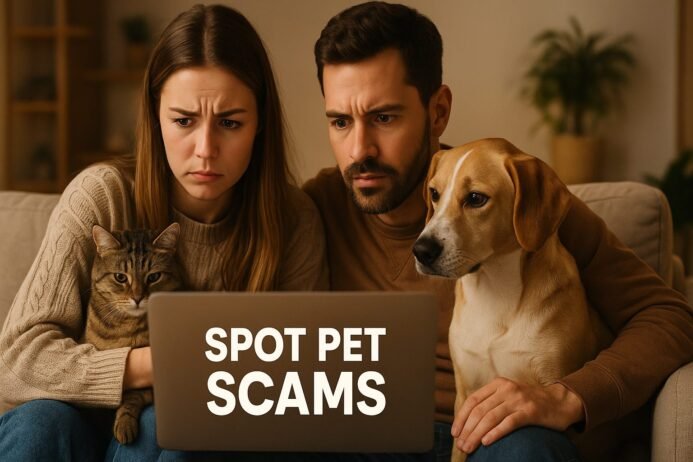Pet Scammers Guide for BuyAPet.co.uk Users
- 13 April 2025
- BuyAPet Editorial Team
- BuyAPet User Articles (Support)
Protecting UK pet buyers
Buying a Pet Online: How to Spot Scams and Stay Safe
Buying a pet online can be exciting—but scammers do target unsuspecting buyers. Use this guide to recognise warning signs, avoid common traps, verify sellers, and take action if you suspect a scam.
Quick Safety Checklist
- ✓ Prices that are too good to be true
- ✓ Unusual payment requests (wire, gift cards, crypto)
- ✓ Refusal to meet in person or video call
- ✓ Stock photos or stolen images in the advert
- ✓ Pressure to pay a deposit immediately
- ✓ No paperwork or vague answers to questions
1. Signs of a Pet Scam
A. Unbelievably low prices
If the price seems far too good to be true, it probably is. Compare against reputable breeders and sellers.B. Limited or no contact details
Legitimate sellers share clear contact information. Be wary of evasive answers or hidden locations.C. Asking for unusual payment methods
Be cautious if asked to use money transfers, gift cards or cryptocurrency. These are hard to trace and often used in scams.D. Pressure to decide or pay quickly
Scammers manufacture urgency—claims of many other buyers or “today only” deals. Take your time.E. Refusal to meet or show the pet
Genuine sellers will meet in person or do a live video call. Refusal is a red flag.2. Common Pet Scams to Watch Out For
A. Fake pet listings
Scammers use stock/stolen photos and make false promises. Ask for fresh photos/videos on request.B. Shipping scams
Seller claims they’ll ship the pet after payment—then the pet never arrives. Insist on meeting first.C. Overpayment scams
A buyer “overpays” and asks for a refund; their original payment later bounces. Never refund until funds have cleared.D. Fake rescue organisations
Fraudsters pose as rescues and collect “fees” or donations for animals that don’t exist. Verify charities before paying.3. How to Protect Yourself
A. Do your research
- ✓ Verify the seller’s identity and online presence
- ✓ Read reviews/testimonials from real buyers
- ✓ Compare pricing with reputable breeders/organisations
B. Meet in person
- ✓ Prefer the seller’s home; otherwise meet in a safe, public place
- ✓ Inspect the pet and ensure it matches the description
- ✓ Avoid third-party collection or random drop-offs
C. Request a live video call
- ✓ See the pet live and interacting
- ✓ Ask to see today’s date written on paper in frame
D. Verify documents
- ✓ Health records and vaccination details
- ✓ Microchip number and paperwork (if applicable)
- ✓ Breeding/ownership history or references
E. Trust your instincts
- ✓ Walk away from pressure or anything that feels off
- ✓ Use secure, traceable payment methods only
4. What to Do If You Suspect a Scam
- ✓ Report to Action Fraud (UK): actionfraud.police.uk or call 0300 123 2040
- ✓ Contact your bank/payment provider immediately to request help or a chargeback
- ✓ Block the seller on all platforms
- ✓ Share your experience to warn others (social media/forums)
5. Additional UK Resources
- Action Fraud: Report fraud and cybercrime (actionfraud.police.uk)
- Citizens Advice: Consumer rights & scam advice (citizensadvice.org.uk)
- Trading Standards: Advice/report a scam (tradingstandards.uk)
- Pet Industry Federation (PIF): Find reputable sellers (petfederation.co.uk)
FAQs
How can I tell if an advert is real?
Ask for a live video call, fresh photos, and paperwork. Refusal to meet or show the pet is a red flag.Is it safe to have a pet delivered?
Delivery without meeting the seller first is risky. Always visit and see the pet and environment.What’s a safe deposit?
Only pay a small, traceable deposit after meeting the pet and seller, and get a written receipt.This page provides general information only and is not legal advice.
Post Views: 8,495
